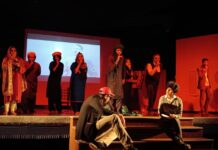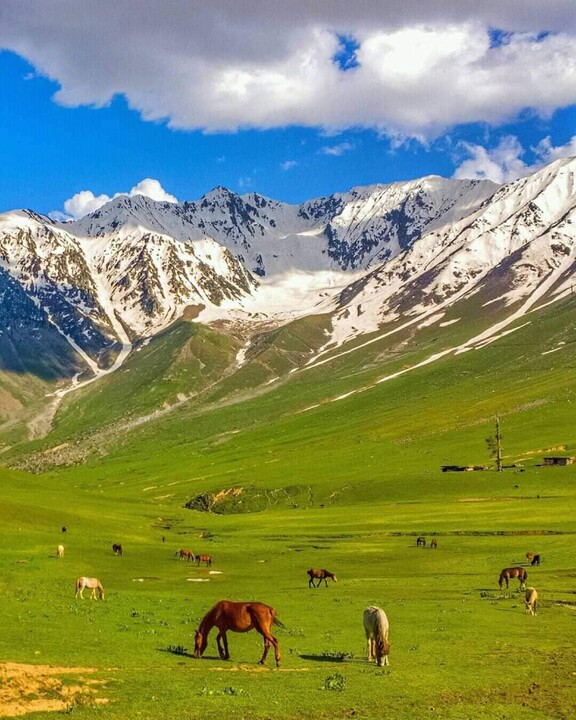Tourism is a dynamic and multifaceted industry that plays a significant role in the economic development of many countries. Its effects on the economy are profound and diverse, influencing various sectors and generating substantial revenue.
Tourism in Pakistan has enormous potential to boost economic growth, generate jobs, and encourage cultural interchange. The country’s rich history, various landscapes, and dynamic cultures make it a popular tourist destination. However, to fully enjoy its economic benefits, Pakistan’s tourism sector must confront some problems. Tourism is a significant source of revenue for many countries. According to the World Tourist Organization, worldwide tourist earnings totaled $1.7 trillion in 2019.
Pakistan may establish itself as a top vacation destination by highlighting its natural beauty, rich history, and cultural variety. To create a resilient and prosperous tourist business, the public, corporate, and local communities must work together in a cooperative manner
This infusion of funds benefits national economies, especially in countries that rely significantly on tourism. Pakistan’s GDP is considerably boosted by tourism. The sector earns a significant amount from the sale of lodging, food, travel, and entertainment. Spending by local and foreign tourists is a significant source of revenue.
According to a 2019 World Travel and Tourism Council (WTTC) study, 2.9 percent of Pakistan’s GDP came from tourism. The tourism industry is a major employer in Pakistan, including opportunities in hotels, restaurants, travel agencies, and tour operations. Employment prospects in tourism can help alleviate poverty and improve living conditions, particularly in rural and underdeveloped regions with tourist attractions. Jobs in the tourism industry have the potential to lower poverty and raise standards of life, especially in rural and underdeveloped areas that are popular tourist destinations.
For example, the natural beauty of places like Gilgit-Baltistan and Swat has led to an increase in local employment because of tourism. Work in the tourism industry may be found in a variety of sectors, including agriculture and handicrafts, which provide goods and services to travellers, as well as direct work in hotels and travel agencies.
In 2017 Travel & Tourism directly supported 1,493,000 jobs (2.5 percent of total employment). This is expected to rise by 2.8 percent in 2018 and rise by 2.7 percent annually to 2,008,000 jobs (2.6 percent of total employment) in 2028. Travel & Tourism investment in 2017 was Rs 410. 4 billion, 9.1 percent of total investment ($3,893.4 million). The necessity to promote tourism drives investments in infrastructure such as roads, airports, and public amenities.
These enhancements help both visitors and local residents. Improved infrastructure can stimulate further economic activity and attract other types of investment. CPEC is a massive infrastructure development project connecting Pakistan to China’s western Kashgar and Xingjiang Provinces via Gwadar. The CPEC route would connect the entire region with modern roads and transit, increasing the number of tourists in the area.
There have been few studies on tourist development in Pakistan, particularly within the context of the CPEC. Thus, the current study will look at the relationship between CPEC road and transportation developments and local support for tourist growth in Pakistan. For instance, the development of the Islamabad Rawalpindi Metrobus Service offers locals a dependable mode of transit in addition to making travel for visitors easier. Tourism promotes Pakistan’s diverse cultural assets and historical places, hence boosting preservation efforts. Events and festivals that attract tourists also assist to preserve and celebrate local customs and crafts. Tourism promotes Pakistan’s diverse cultural assets and historical places, hence boosting preservation efforts.
The surge of tourists to areas like Mohenjo-Daro, Taxila, and Lahore Fort highlights the need of preserving these sites. Tourism revenue may be reinvested in conservation programs, ensuring that these treasures are preserved for centuries to come. Tourist-attracting events and festivals contribute to the preservation and celebration of local traditions and crafts. For example, the yearly Shandur Polo Festival attracts foreign tourists while simultaneously revitalizing local culture and customs. This cultural exchange promotes a better knowledge and appreciation for Pakistan’s rich history.
Travelers from other countries have traditionally refrained from visiting Pakistan due to security concerns. Tourist arrivals are still impacted by perceptions of risk, notwithstanding recent major improvements in security. Things like the 2008 Islamabad Marriott Hotel attack and other occurrences have left a poor perception that hasn’t gone away.
The global image of Pakistan as a safe place is critical for increasing tourism. The government has made steps to bolster security at major tourist attractions and general law and order. Positive media coverage and endorsements from travel bloggers and influencers who have visited Pakistan also assist to dispel negative stereotypes. While there have been advances, poor infrastructure in
many locations continues to impede tourism growth. Poor road conditions, limited public transportation alternatives, and inadequate facilities might discourage tourists from visiting the country’s attractions.
For example, while areas like as Skardu and Hunza are famed for their breathtaking beauty, the difficult trek to these locations might dissuade many potential tourists. Continued infrastructural investment is required to support the tourism industry’s growth. Creating dependable transit networks, assuring the availability of excellent lodging, and enhancing basic amenities may all considerably improve the visitor experience. Public-private partnerships can be useful in funding and carrying out these initiatives.
An error correction model (ECM) was applied to yearly time series data from 1972 to 2013. Tourism is assessed by the number of international tourists that visit the country. According to the findings, terrorist incidents have had a negative influence on tourism, but infrastructure and GDP per capita had a favourable impact. It is possible to infer that regardless of the government’s attempts to enhance foreign tourism, the intended outcomes will not be achieved unless terrorism is abolished.
Pakistan has made significant efforts in recent times to enhance its tourist sector. The goal of initiatives like the “Emerging Pakistan” campaign and the Pakistan Tourism Summit is to draw tourists from outside. Additionally, the government is improving the nation’s security and tourism amenities. The inauguration of the Kartarpur Corridor, which enables Sikh pilgrims from India to visit a sacred site in Pakistan without a visa, is one significant step. This has demonstrated Pakistan’s support for tourism while also advancing peace.
Pakistan also promotes ecotourism and adventure tourism. Areas such as Gilgit-Baltistan, Khyber Pakhtunkhwa, and Azad Kashmir provide excellent chances for trekking, mountain climbing, and exploring nature. By concentrating on sustainable tourism, Pakistan can preserve its natural beauty while also offering travellers with unique experiences.In Pakistan, tourism holds great potential to propel economic growth. It fosters cultural heritage, produces income, and creates jobs. But in order to realize this potential to its fullest, Pakistan has to solve infrastructural issues, deal with security issues, and put marketing plans into action. Coherent legislative and policy frameworks are also necessary to guarantee the growth of sustainable tourism. Pakistan’s economic growth and international reputation may be considerably enhanced by tourism, if it is pursued with determination and well-considered investments.
Pakistan may establish itself as a top vacation destination by highlighting its natural beauty, rich history, and cultural variety. To create a resilient and prosperous tourist business, the public, corporate, and local communities must work together in a cooperative manner.























